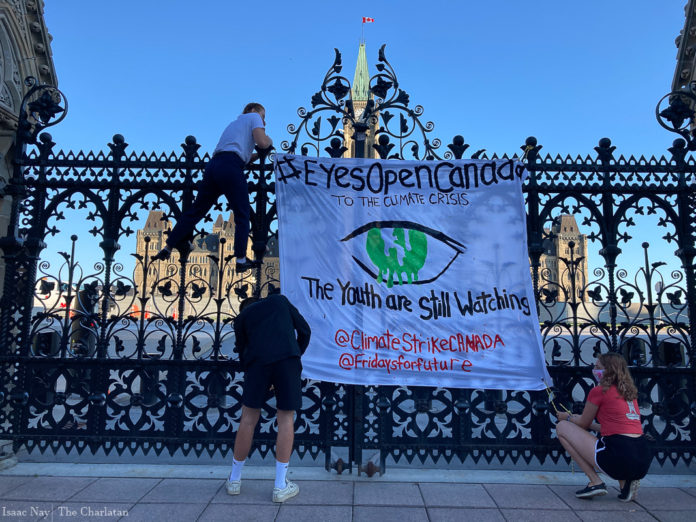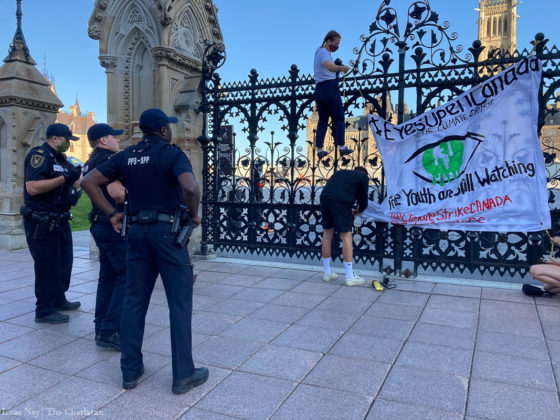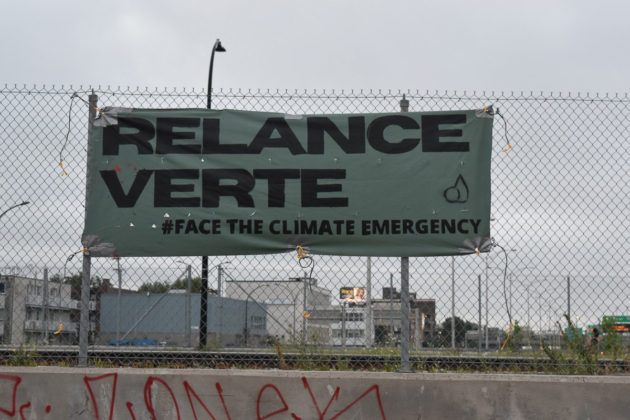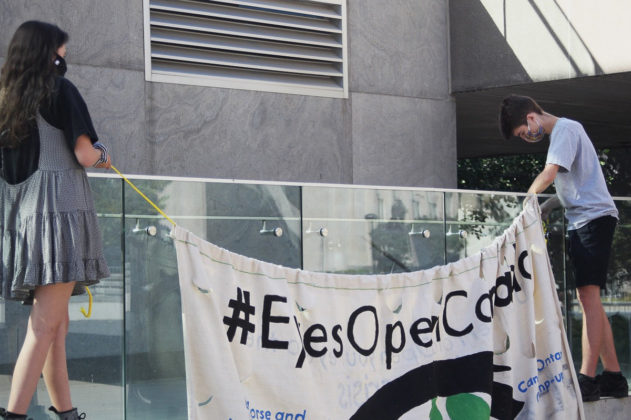Environmental activists coordinated small demonstrations in Edmonton, Montréal,
Toronto and Ottawa on Aug. 12 to remind the provincial and federal governments that the youth in this country are still aware of other issues overshadowed by the pandemic.
At 7:00 a.m., activists from Climate Action Carleton, Edmonton Youth for Climate, Fridays for Future Toronto and the Coalition étudiante pour un virage environnemental et social
(CEVES) paraded and posted banners with the slogan #EyesOpenCanada outside of Parliament, Queen’s Park in Toronto, the Alberta Legislature Building and across Montréal.
Demonstrators acted in groups of 10 or less so as to comply with COVID-19 social-distancing protocols.
At 7:45 a.m., police asked Ottawa demonstrators to remove their banner from the Gates at parliament. Protesters at Queen’s Park were asked by police to leave the premises when they attempted to post their banner. Neither group was given an explanation for the request, but the Ottawa group complied immediately and took their banners through the streets. According to Cooper Price, an activist working with Fridays for Future Toronto and a high school student at University of Toronto Schools, the activists in Toronto also complied and left.
The Eyes Open movement represents a variety of social causes, not only environmental activism.
Although the specific bills and policies the groups protested vary from province to province, the demonstrations commonly called for reallocation of government spending into education and social services, and the implementation of Bill 76—the United Nations Declaration on the Rights of Indigenous Peoples Act.
Abram Ilcisin, an activist with Edmonton Youth for Climate entering his senior year at McNally High School, said activists want it to be known that the youth have not forgotten about important social issues just because of COVID-19.
“The Eyes Open Movement is a continuation of the strikes that happened earlier in 2019 and early 2020,” he said. “Even though COVID is a big problem, and it’s a more immediate problem, it’s not the only problem.”
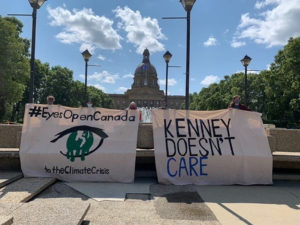
Ontarian demonstrators were particularly focused on pushing for Schedule 6 of Bill 197 (the COVID-19 Economic Recovery Act) to be repealed.
Steph Vienneau, a second-year environmental studies student at Carleton who took part in the Ottawa demonstration, said that Schedule 6 changed the Canadian Environmental Assessment Act, altering the assessment process for infrastructure projects.
“It used to be that they would have to do an environmental assessment through the government, and then they would also give the public 30 days to consult, and come up with any amendments or changes that they want to see,” she said. “Now they don’t have to consult the public … nobody is really holding them accountable for their actions.”
Gary Wheeler, spokesperson for Ontario’s Ministry of Environment, Conservation and Parks said the changes are meant to streamline and modernize the assessment process.
Projects that are deemed to require an environmental assessment will face a quicker assessment process. Mr. Wheeler’s hope is that faster construction of infrastructure projects will help Ontario’s economy recover from the strain caused by the COVID-19 pandemic, create thousands of jobs, and create more affordable housing.
“The current process for comprehensive environmental assessments can be slow and ineffective,” Mr. Wheeler said in a written statement. “It can take up to six years for some projects, slowing down important infrastructure projects that help Ontario communities, such as installing electricity infrastructure.”
According to Mr. Wheeler’s statement, the Ontario Government is committed to keeping a thorough environmental assessment program that will still take into account the input of communities, even during the economic recovery from COVID-19. His statement did not specify the details of the assessment program.
Freedom of speech, assembly and association
A major concern of the Albertan protestors is Bill 1, or the Critical Infrastructure Act, which allows the Alberta government to stop protests and gatherings on whatever land the province classifies as essential infrastructure.
“The government having the ability to make protesting in areas … illegal in mere days is extremely dangerous to the future of democracy,” Abram said. “If Kenney wanted to, he could theoretically go up and ask the person to make roads and major roadways in cities essential, which would just completely shut down any marches.”
In Ottawa and Toronto, activists share similar concerns. Although Ontarians are not subject to the same bill, demonstrators said COVID-19 made it difficult to organize traditional methods of protest.
Sam Taylor, a third-year student in public affairs and policy management at Carleton and Climate Action Carleton member, said freedom of speech is one of the main freedoms demonstrators wish to protect.
“To be able to stand up and say this isn’t right, to sound the alarm and turn things around—if that’s being impeded in places like Alberta, it spells disaster for our country, and for the people in it,” Taylor said.
Despite how the pandemic stunts protests and rallies, activists still believe there are effective ways for citizens to voice their concerns.
“You have to get creative,” Taylor added. “At our best, activists are creative and they think on their feet. There are ways to [be heard] digitally, there are ways to get together and not circumvent but abide by the restrictions and still figure things out.”
Featured image by Isaac Nay.


